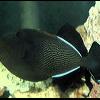How to perform Hyposalinity treatment
-
Topics
-
Latest Update
-
0
Selling the following Items
Selling the following items below. Hailea HK-150A Chiller, 1/10hp including OASE Pump @ $250. Eheim 12/16mm Hose (3m Length)- Brand New and keep as spare @ $12. Vortech MP10QD @ $350. Anemone Guard (Compatible for Vortech MP10) @ $20. Jebao Wifi Doser MD 4.4 @ $60. Dosing Tube (4m Length) - Brand New and keep as spare @ $10. Acrylic Dosing Tube Holder @ $10.DD Compact ATO Unit @ $70. Acrylic Reservoir 5litres @ $50. Tunze Magnet Care Nano 0220.010 - Sold. Redsea Complete 4-part Supplement Program - Brand New and keep as spare @ $95. Redsea Dosing Tube (4 ea) - Brand New and keep as spare @ $25. Salifert (KH) Test Kit - Expiry Date: 03/2028 @ $16. Salifert (CA) Test Kit - Expiry Date: 03/2028 @ $28. API Ammonia NH3/NH4 Test Kit - Expiry Date: 07/2027 @ $14. Fauna Marin Min S - Liquid Coral Food (1000ml) - Expiry Date: 04/2026 - 90% Balance @ $70. Interested, please PM me. All items ready for collection @ Jurong -
0
WTS Redsea Max Nano Peninsula Complete System
Selling the WTS Redsea Max Nano Peninsula System due to upgrade to new Redsea Reefer 250 tank. Redsea Max Nano Peninsula Complete System come with Reef safe Reef LED 50 Lighting, Pump provides 950 l/h(240gph), Rear Sump & Automatic Top-Off unit with a 1.5 liter reservoir including Redsea Aquarium Net Cover, Max Nano Filter Bag 100 micron (1 pcs Used & 1 pcs New), 1 pcs Marco Rockscape, 2 pcs AF Rocks, Caribsea Life Rock Frags. Tank dimension: Display tank length : 45 cm, height : 45 cm, width : 58.5 cm. Total system height : 132 cm, Total system water vol. : 100 L, Display tank water vol. : 87L, Ultra-clear Front & Side glass : 8mm, Bottom glass : 10mm - No Leak, No crack, No Rust. @ $600. Buyer to arrange for own transport. Interested please PM me. *Items is ready for Collection at Jurong. -
7
Decommissioning Sales of 5f Reef Tank
Thanks for all the queries and it is overwhelming. I decided to close this thread for now to better structure how the decomm is going to take place progressively. Sorry that I may not be able to response to all and hope to seek your understanding that this will have to be carry out in stages to minimize disruption to the livestock. -
1
-
1
decom sale im nuvo20
IM NUVO 20 + Al hydra 26hd + Teco tk 500 + cabinet $450 Sent from my iPhone using Tapatalk
-






Recommended Posts
Join the conversation
You can post now and register later. If you have an account, sign in now to post with your account.